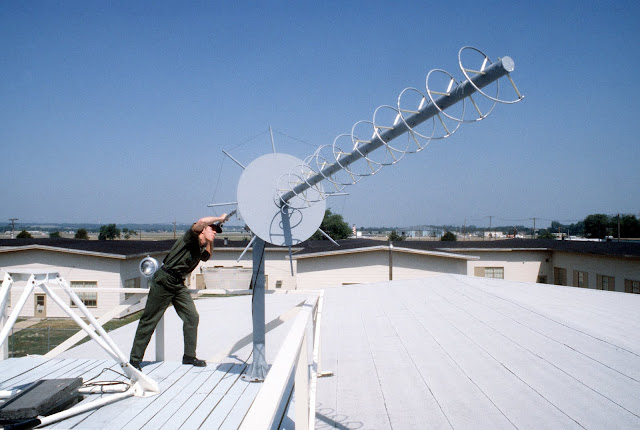U Slot Patch Antenna Design
- Slot Antenna Design
- Patch Antenna Design Calculator
- Design Of U-slot Rectangular Patch Antenna For Wireless Lan At 2.45ghz
- Slot Antenna For Hf
- Slot Antenna Pdf
- Patch Antenna Design Formula
- The basic principles are illustrated here for a rectangular patch, but the principles apply similarly for other patch shapes. We use the cavity model to explain the operation of the patch antenna. Richards, “Theory and Experiment on Microstrip Antennas,” IEEE Trans.
- Most of the reported work, an in-depth explanation about the mode introduced by U-slot and procedure to design U-slot cut antennas at any given frequency is not explained. In this paper, first an extensive analysis to study the broadband response in symmetrical and a new configuration of asymmetrical U-slot cut rectangular microstrip.
- Covering the areas of UWB fundamentals and antenna theory. In recent years, the U-slot patch antenna established itself as a versatile, low profile and cost effective antenna that can be fine-tuned for ultra-wideband operations. The main objective of this thesis is to propose an effective practical design procedure to design U-Slot antenna and provide physical insight into the.
The standard rectangular microstrip patch is a narrowband antenna and provides 6-8 dBi Gain with linear polarization. This example based on the work done in [1],[2], models a broadband patch antenna using a slot in the radiator and develops a dual-band and a tri-band variation from it. In the process, the single wide response has been split into multiple narrow band regions catering to specific bands in the WiMAX standard. These patch antennas have been probe-fed.
This technique is a modified version of a U-slotted patch antenna. Coupled slots parallel to both ends, arms, of the U-shaped slot are added to enhance the bandwidth. The proposed structure is simulated using IE3DTMand SonnetTM, commercial software packages,. In this paper, we are going to design a U-slot loaded circular microstrip patch antenna. The patch lie in the XY plane over a large ground plane with substrate thickness (h.
Building the Single U-Slot Patch
Define Parameters The basic U-slot patch antenna consists of a rectangular patch radiator within which a U-shaped slot has been cut out. As discussed in [1], the patch itself is on an air substrate and thick so as to enable higher bandwidths to be achieved. The presence of the slot structure achieves additional capacitance within the structure which combines with the inductance of the long probe feed to create a double resonance within the band. The geometry parameters based on [2] are defined and shown in a drawing below.
Define radiator shape - Single U-slot
Slot Antenna Design
Use the rectangle shape primitives in Antenna Toolbox™ to create the U-slot patch radiator shape. Boolean subtraction operation is used among the shape primitives for this purpose.
Define ground shape
Create the ground plane shape for the antenna. The groundplane in this case is rectangular and 71 mm x 52 mm in size.
Define stack
Use the pcbStack to define the metal and dielectric layers and the feed for the single U-slot patch antenna. The layers are defined top-down. In this case, the top-most layer is a metal layer defined by the U-slot patch shape. The second layer is a dielectric material, air in this case, and the third layer is the metal ground plane.
Patch Antenna Design Calculator
Calculate and Plot Reflection Coefficient
Mesh the structure by using a maximum edge length which is one-tenth the wavelength at the highest frequency of operation which is 6 GHz for this example. Compute and plot the reflection coefficient for this antenna over the band. The reflection coefficient is plotted with a reference impedance of 50 ohms.
Calculate and plot pattern
Design Of U-slot Rectangular Patch Antenna For Wireless Lan At 2.45ghz

Plot the radiation pattern for this antenna at the frequencies of best match in the band.
Dual-band U-Slot Patch Antenna
Define Parameters

To achieve dual-band behavior as shown in [1], [2], the double resonance is modified such that the two contributing resonances, i.e. from the patch and from the slot do not merge. To do so the existing slot parameters are adjusted and a second slot is introduced into the structure. The parameters for the double U-slot are listed below as per [2] and a figure annotated with the variables used is shown.
Create Double U-slot radiator
As before use the shape primitives, to create the geometry by using Boolean operations.
Modify Layers in Stack
Modify the existing stack by introducing the new radiator in the Layers property.
Mesh and Plot Reflection Coefficient
Slot Antenna For Hf

Mesh the structure at the highest frequency of operation and calculate the reflection coefficient.
Triple-Band U-slot Patch Antenna Parameters
For triple-band operation a third U-slot is introduced and the existing slot parameters are adjusted. The parameters are shown below based on [2].
Create Triple U-slot radiator
Modify Layers in Stack
Slot Antenna Pdf
Mesh and Plot Reflection Coefficient
Conclusion
The models of the multi-band single layer U-slot patch antenna as discussed in [1], and [2] have been built and analyzed and agree well with results reported.
Patch Antenna Design Formula
Reference
[1] K. F. Lee, S. L. S. Yang and A. Kishk, 'The versatile U-slot patch antenna,' 2009 3rd European Conference on Antennas and Propagation, Berlin, 2009, pp. 3312-3314.
[2] W. C. Mok, S. H. Wong, K. M. Luk and K. F. Lee, 'Single-Layer Single-Patch Dual-Band and Triple-Band Patch Antennas,' in IEEE Transactions on Antennas and Propagation, vol. 61, no. 8, pp. 4341-4344, Aug. 2013.